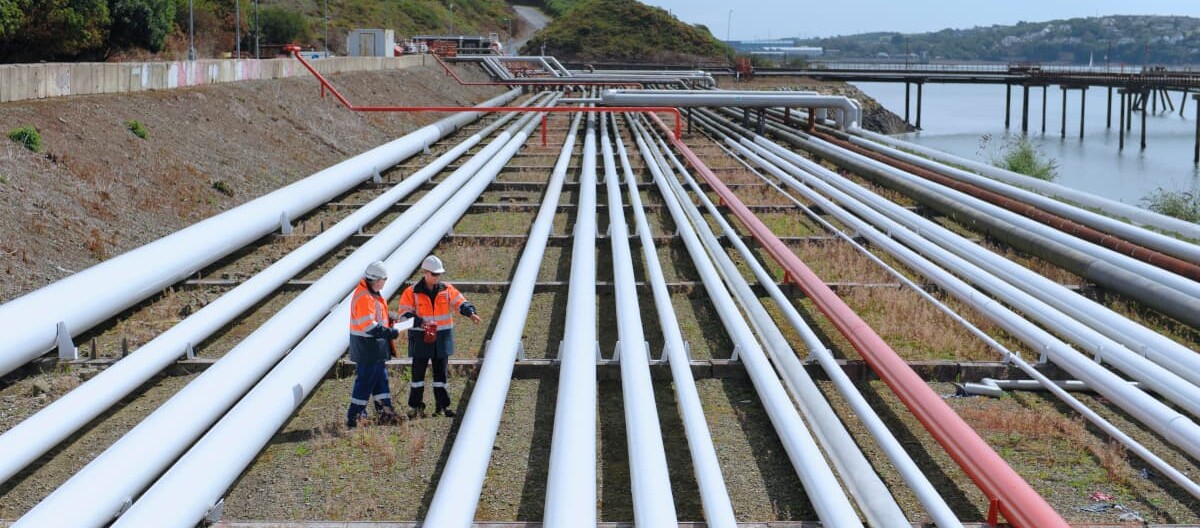EU agrees on gas price cap
After a long period of hesitation, the EU has agreed on a European gas price cap at the end of 2022 to cushion the impact of the Ukraine war. According to the agreement, gas may only be purchased on the TTF trading hub up to the price limit of 180 euros per megawatt hour (MWh) from February 15, 2023 - but only as long as there is no gas emergency or gas trading does not come to a standstill. This cap seems almost obsolete in light of prices from January 2023, which are at pre-war levels of around 70 euros per MWh - but in August 2022, gas was trading there for 350 euros per MWh.
A gas emergency now appears impossible for the winter of 2022/23: temperatures have been too warm so far, for example. In addition, significantly more LNG was imported than in previous years. On January 7, European gas storage facilities were 83.2 percent full, well above even the seasonal five-year norm of 70 percent. But no one yet dares to make a serious forecast of how things will look in the coming winter.
Present your company on our platform!
The advantages:
- International audience and visibility
- Set-up in 5 minutes
- Numerous options and services through individual content
Germany's concerns: security of supply at risk
Some countries, including Germany and the Netherlands, had raised concerns about the gas price cap. They fear that the price cap would allow major buyers to sell gas to Asia, for example, where prices would be higher. This, they said, would jeopardize security of supply in Europe. Similar concerns were also expressed by the Association of Municipal Companies (VKU) and the Federation of German Industries (BDI). If gas-intensive companies had to ration fuel, the entire European economy would come to a standstill in the worst case.
German government's gas price brake should also ease the burden on companies
The European gas price cap is not to be confused with the German government's gas price brake, which will come into force in March 2023, but will then provide retroactive relief from the beginning of the year. It caps the gas price for consumers at twelve cents per kilowatt hour (kWh) for four-fifths of the basic requirement. Anything consumed in excess of this must be paid for at the market price.
And companies also benefit from this regulation: many smaller businesses in the trades, commerce, trade and service sectors that are not gas-intensive also fall under the so-called standard load profile. The condition is that they do not exceed the consumption limit of a maximum of 1.5 million kilowatt hours of gas per year.
Industrial companies with higher consumption are also to be relieved. From January 2023, they will receive 70 percent of their natural gas consumption in 2021 from their suppliers at a guaranteed seven cents per kilowatt hour. For the remaining consumption, industry will also pay the regular market price.
The plan also provides for further assistance: For example, larger companies are to be reimbursed in full for additional costs of up to two million euros, and half for up to four million euros. However, the requirements for drawing down the subsidy are apparently difficult for many medium-sized companies to fulfill, so that the hardship aid does not reach some companies.
For particularly large industrial consumers with additional costs of up to 150 million euros, quite complicated regulations apply, which also depend on the EU's aid guidelines. For example, only companies whose profit in the full year 2023 is presumed to be 40 percent or more below that of 2021 are eligible. And many do not want to venture such a forecast.
Doubts from economists
Several economists have expressed doubts as to whether the billions in government aid for large industrial companies makes sense. After all, gas prices would presumably remain high in the coming years, and government subsidies are now limited. Instead, these companies should be given incentives to transform so that they can manage with lower energy consumption in the future.


